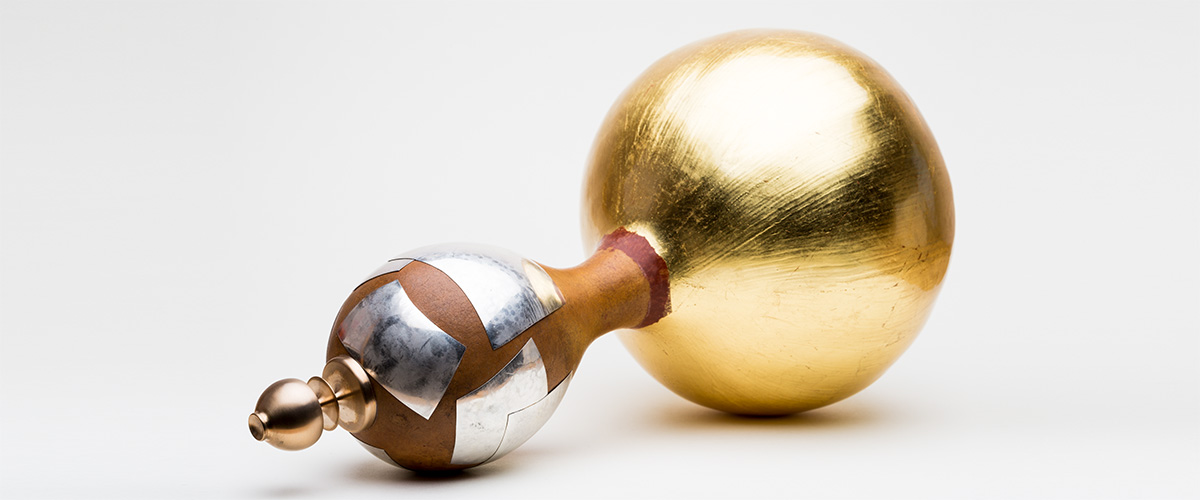The piece is an African bottle gourd (calabash), painted over with car lacquer and provided with a bronze knob that seems to indicate the opening of a vessel, through which water, grain or palm wine might flow. The larger bulb of the gourd is covered with a 24-karat gold leaf, the smaller bulb is patched with sterling silver.
Like any hollowware, calabash can be used as a vessel for food or drinks, which are products of the earth, or as a resonating body for producing sounds, which are waves of air. Earth and air are their frame of reference. However, in premodern systems of thought, earth and air are often not only primordial elements, but also the first steps of a cosmic chain that ultimately leads on to the celestial bodies.
Whereas the two bulbs of the calabash form a dyad, the bronze knob extends them to a series that is reminiscent of the planets of the solar system in alignment. Thus the calabash, a traditional channel for the flow of musical or material nourishment, becomes a metaphor for the cosmic order embedding the human body, in permanent need of being nourished and adrift on the pathways of destiny.
The ornamental structure of the surface underscores the transformation of the calabash into a metaphor that connects the sublunar realities of earth and air flowing through it in its daily functions with the constellation of celestial bodies evoked through its bulbous form. For, as we remember the ancient Mesopotamian catalogues of correspondences between metals and heavenly bodies, defining gold as a symbol of the Sun, silver as that of the Moon, copper as symbolising Venus, we can observe, how the reworking of the surface of the calabash with gold and silver and attaching the bronze knob to the whole transforms it into a symbolic evocation of a cosmic alignment of the Sun (gold), the Moon (silver) and Venus (copper, which is predominant in bronze).
The silver patches on the surface of the smaller bulb seem to interrupt the otherwise immaculate surface of ornamentation to effect something like a Brechtian Verfremdungseffekt that seems to say: “Look at this! This is not what it seems to be, it is not a symbol, but something that has emerged from the human hand with its futile attempts at transforming clumps of matter into art to make sense of whatever is going on!”
Text by Pravu Mazumdar. Pravu Mazumdar studied physics in New Delhi and Munich and has a doctorate in philosophy from the University of Stuttgart, Germany. He lives as a writer and teacher in Munich. His areas of work include art and philosophy, and his books are closely related to French postmodernism, in particular the philosophy of Michel Foucault. Forthcoming is a book on jewelry titled Die entfesselte Oberfläche (The Unleashed Surface), Berlin: Matthes & Seitz.
Photos by Christian Habetzeder.

